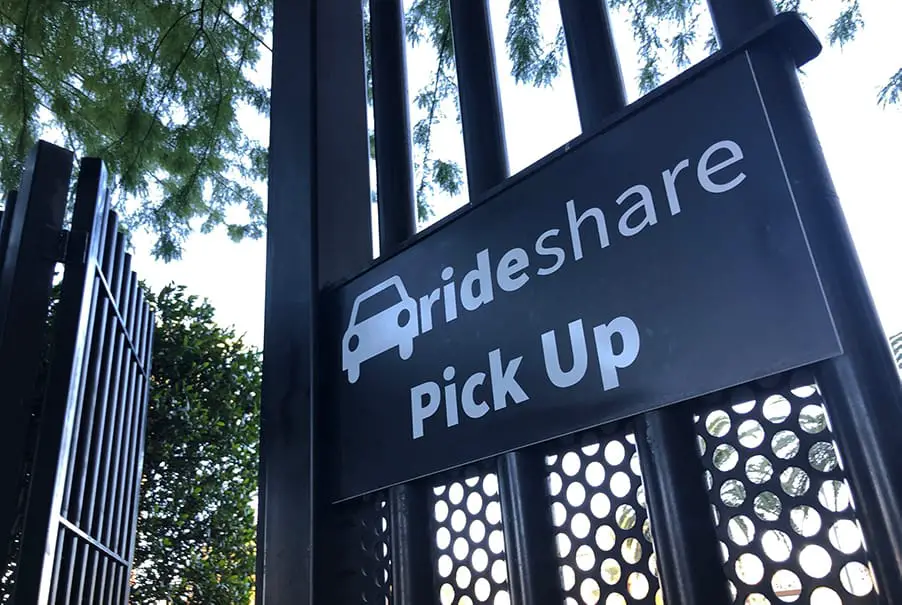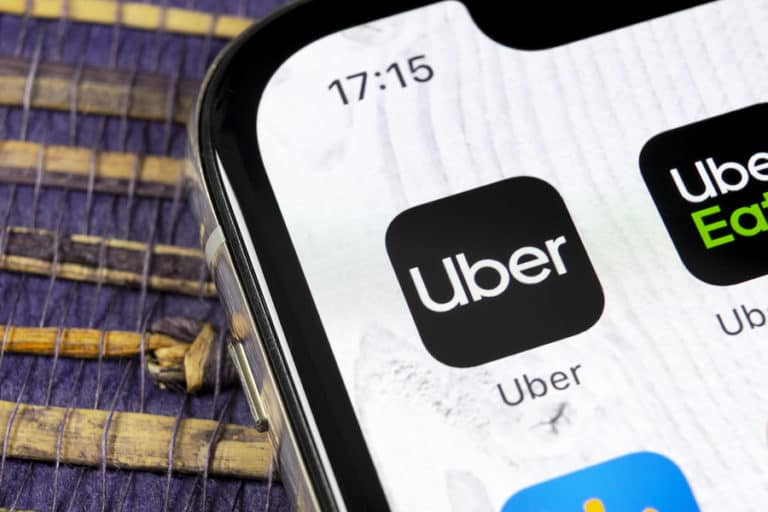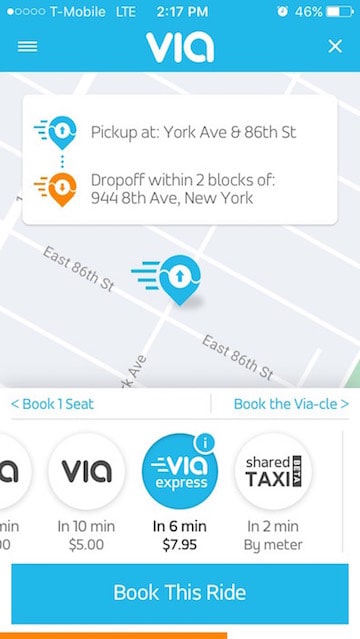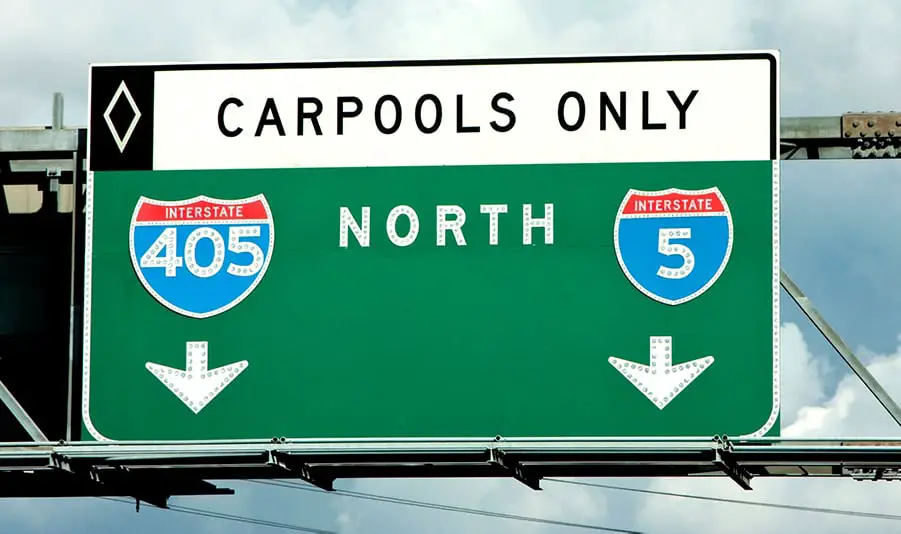
There’s no need to endure expensive cab rides when travelling. Not at a time when rideshare websites let you travel anywhere in style and comfort at a fraction of the cost. There are loads of rideshare website options and they could be ideal to get you where you need to be.
The best rideshare websites offer riders a variety of cars, have a vast market presence, and affordable pricing points. Ride splitting options are beneficial. Some rideshares support surge pricing in response to spiking demand, so be sure to pick one that won’t saddle you with a huge bill.
Here’s a rundown of the best ride-sharing websites in 2020!
Rideshare Websites
Uber
Founded in 2009 in San Francisco, California, Uber is the most popular ridesharing website in the world. Uber has a global presence and operates in over 900 cities in 71 countries. It commands 65% of the rideshare markets in the US, Canada, Europe, Latin America, Africa, and the Middle East.
Uber has 5 million registered drivers globally, which lets the ridesharing company provide an average of 17 million trips per day. As of 2019, 40.9% of Uber drivers were women compared to 36.1% in 2017.
As of March 2020, Uber had over 100 million users who collectively took over 1.658 billion trips. In its decade long existence, Uber has facilitated more than 10 billion trips, making it the undisputed global leader in ridesharing.
With 41.8 million users, the U.S. is Uber’s biggest market, and Brazil comes in a distant second with 22 million users. India has 5 million active weekly users, while the biggest European market—the U.K.—has 3.5 million users.
The average Uber user takes about six trips in a month, and most Uber users in the U.S. are between 16 and 34 years of age.
How Does Uber Work?
You need to register on Uber’s website or app to use this rideshare service. To request a ride, simply enter your pickup point, destination, and choose your preferred service.
The service will match you with the nearest driver, who will call you to confirm the ride. On confirmation, the driver will make their way to your location.
Uber uses a dynamic pricing strategy that leads to a pricing surge during the busy periods. Rider-to-driver demand, distance, traffic, and time are some of the variables that determine your ride’s cost. Uber fare increase is a constant source of customer pain and grievances.
Uber’s Car Classes

Uber offers a diverse range of cars across different pricing points, so you must pick one that suits your budget.
Here’s a quick rundown of the options available in most cities:
- Uber X provides small or midsize sedans that are less than 15 years old.
- Uber Select is a luxurious version of the Uber X that comes with newer cars and top-rated and experienced drivers.
- Uber XL is a supersized version of the UberX, mostly minivans and crossover SUVs that carry up to seven passengers.
- Uber Black is Uber’s pioneering service and provides black SUVs with black leather or faux leather interior driven by highly rated and experienced drivers.
- Uber Comfort provides newer, mid-sized vehicles with extra legroom driven by a top-rated, experienced driver. You can choose temperature and conversation preference, and it comes with extra paid wait time.
- Uber Lux is a luxury package with high-end pristine black vehicles with black vinyl or leather interiors and not older than five years.
- UberPOOL is Uber’s carpooling option that allows people heading in the same direction to carpool and split the costs.
Lyft
Founded in 2012, Lyft is, by volume, the second largest ridesharing company in the U.S. after Uber. The rideshare company spawned from Zimride, a long-distance carpooling service owned by Lyft founders Logan Green and John Zimmer.
Unlike Uber, Lyft currently operates in the U.S. and Canada. The rideshare operates in 644 cities in the U.S., where it commands about 40% of the market.
Lyft’s aggressive push into mid-sized and smaller cities has seen its operations in the U.S. grow three-fold since 2017.
In Canada, Lyft operates in only 12 cities, including Toronto, Vancouver, and Ottawa.
As of March 2020, Lyft has 21.2 million users, a significant jump from 3.5 million users in the same period in 2016. The company hit the 1 billion rides milestone in September 2018.
More than 23% of the reported 2 million Lyft drivers are women. A quarter of Lyft drives are more than 50 years old, and 66% of the drivers belong to a minority group.
Lyft covers 95% of the U.S. population and is popular with the youthful generation, with 49% of users falling in the 18 to 34 age bracket. The average Lyft user hails the service about five times a month, and the company averages over 50 million rides a month.
How Does Lyft Work?
You need to register on Lyft’s website or app to use its service. Once you’re logged into the service, you can request a ride by entering your pickup point and destination. The service then matches you with the nearest Lyft driver.
Initially, Lyft used car stashes—pink furry mustaches—to identify their cars. However, the service switched to a module system known as Amp, which doubles up as a security measure.
The Amp sits on the driver’s dashboard and projects a unique color when waiting for a passenger. After hailing a ride, you will get a notification with the Amp color to help you spot your driver in a busy street.
Once the ride begins, the Amp welcomes you by name and a special message during major events and holidays. The Amp also displays your name when approaching your drop off or pick up during a shared ride.
Lyft allows riders to tip drivers at the destination or up to 72 hours later, and drivers keep 100% of their tips. You can split the cost of the ride within the Lyft app during the ride.
Lyft’s Car Classes
Lyft offers rides a diverse range of cars with different pricing points:
- Lyft Line is a carpooling service that allows passengers headed in the same directions to split fares.
- Original Lyft carries up to four passengers and comprises regular cars.
- Lyft XL comprises regular cars with a carrying capacity of up to six passengers.
- Lyft Premier uses high-end cars and seats four passengers.
- Lyft Lux is a premium black car service with top of the range vehicles.
- Lyft Black is a black car service that includes luxury car brands.
- Lyft Black XL is a premium black SUV service that carries up to four passengers.
Via

Founded in 2012, Via is a rideshare company that provides on-demand public transport. The firm uses a “logistics engine” to transform public transit into a fluid and dynamic network instead of a system of rigid schedules and routes.
Unlike other rideshares, Via ride provides static routes. You simply tell the app where you need to go, and it works out the nearest pickup and best drop off points.
Static routes mean you’ll need to walk a block or two to the pickup location. You might also do a bit more walking to get to your destination as the driver also drops you off at a nearby location.
How Does Via Work?
You need to register on Via’s website or app to use the rideshare service. To request a ride, you only need to enter your current location and drop off points.
On requesting a ride, Via ride matches you with a driver headed in the same direction. The app will inform you of the nearest pickup point so you can get there on time.
You might share the ride with up to five passengers as the driver will pick up and drop off more riders en route to your destination.
Via reservation system allows you to book a ride with your friends; in fact, it encourages it. The system pairs your party with a car with the necessary seating, and each extra person in the group rides at half price.
In short, Via ride lets you split a ride with three to six other riders and has you meet the driver along their route instead of the driver coming to you. In doing so, the app lets you save money and travel in comfort without enduring long delays.
Via services are available in three primary cities—Washington, D.C., New York City, and Chicago. Through collaboration with transit partners, Via offers transit alternatives and rides to bus stops, among other limited services in select cities.
Some of these places include Birmingham, Cupertino, King County, Los Angeles, Arlington, Newton, West Sacramento, and Salt Lake County.
Via’s Ridesharing Options
In addition to the standard Via rideshare service, the company offers three other types of rides.
- ViaExpress: A shared ride service that uses the most direct route to your destination. The service uses the highway instead of the local roads translating to fewer stops and reduced commute time. However, the ViaExpress option only appears whenever the app finds a faster route when requesting a ride.
- Private Ride: This is pretty much an express ride that allows you to avoid lengthy mid-stops when you’re pressed for time or need a whole ride for yourself or a group of friends. Unlike the standard options on Lyft and Uber, you’ll still have to meet the driver at a nearby spot.
- Shared Taxi: If you prefer a traditional taxi driven by a licensed professional, Via provides an option to request a taxi ride. Since it’s a shared ride, the driver may pick additional fares along the way. If the driver picks a passenger, you get a 40% discount off the taxi fare; if not, you pay in full.
In 2017, Via partnered with Curb to extend its rideshare services to New York’s yellow cab. The move allows taxi drivers to ferry more passengers at more affordable rates.
Safr
Formerly known as SafeHer, Safr is a ridesharing service that provides a safe traveling environment for women. The service seeks to redefine rideshare for women in the United States. It comes in the backdrop of recent sexual assault cases against Lyft and calls for Uber to protect their female drivers.
Safr screens and vets each driver rigorously before allowing them on the platform. Furthermore, approved drivers receive mentorship, incentives, and a paycheck that’s higher than the industry standard.
Safr service aims to keep both the driver and the rider safe and makes it easy for them to place a distress call if they’re in danger during a trip.
Although Safr is a women-oriented service, menfolk are welcome to use the service as well. Instead of precluding men from the service empowers users to pick their preferred gender.
You can choose to have a male or female driver, and the drivers also have the choice of picking a male or female client.
How Does Safr Work?
Requesting a ride on Safr is typical of any other rideshare app—enter your pickup and destination and request a ride. The app then matches you with the nearest Safr drivers.
Once you’re matched with a driver, you can accept, and the ride will come to your location. However, you can also cancel the ride without incurring a surcharge if you’re not comfortable with the rideshare. You may cancel if the driver has low ratings, don’t like the vehicle, or previous poor experience with the driver.
You can then get matched with a driver or car that suits your preferences or needs. At the end of the trip, you’re issued with a receipt, and you can rate the driver and offer written feedback.
Safr rides comprise basic sedans that carry up to four passengers. However, Safr’s topnotch safety features more than makes up for the lack of diversity.
Safr Safety Features
Safr takes five primary precautions to keep you safe when using their rideshare service:
- Command center: The Safr team monitors all rides on their platform and will contact both the rider and the driver if the car changes routes before reaching the set destination.
- Color matching: Much like Lyft, Safr uses specially assigned color codes on the app riders to match with their designated drivers.
- Thorough background checks: Safr vets each driver thoroughly before allowing them on the platform. The background, which includes driving and criminal history, is the most comprehensive in the rideshare market.
- In-person vetting: All drivers on Safr’s platform have passed in-person interviews and have had their driving habits assessed before they’re onboarded.
- SOS: The Safr app comes with an SOS button that connects to you 911 or the Safr team. Feel free to hit the button if you’re uncomfortable or facing an emergency.
Taxi Share Websites

Curb
Acquired by Verifone Systems, the firm behind New York’s yellow cab payment system in 2016, Curb is the leading taxi app in North America.
Technically, Curb functions like the more established Uber and Lyft—hail a driver on your smart device and have them whisk you away to your destination. But this underdog comes with a unique twist—it allows you to treat the regular yellow cab like an uber pool.
Curb allows you to hail a regular taxi cab through your mobile device, book a ride and pay in-app after hitching a ride on the street.
Better yet, you can share your taxi ride with other people along the route in exchange for huge discounts. Curb rewards you with a 40% discount on shared rides.
Although an underdog in the ridesharing scene, Curb’s unique business model allows for rapid expansion. The rideshare has a presence in more than 60 cities spread across the U.S., including Los Angeles, San Francisco, Chicago, and Philadelphia.
How Does Curb Work?
Curb is modernizing the taxi sector by allowing taxi fleets and cab drivers to provide the same features you have come to expect when using Uber and Lyft rideshare.
Curb’s system integrates with the existing devices in traditional cabs to improve riders’ experience. That allows taxi cab drivers to offer e-hailing services, adopt contactless payments, offer ride tracking, and even upfront fare pricing.
Curb is in partnership with traditional taxi companies, which adds more than 13,000 yellow cabs to its network. That in addition to thousands of individual registered taxi drivers in various cities.
Currently, Curb has more than 100,000 drivers and 50,000 cabs in its network spread across every major metro area in the U.S.
Curb assigns you a cab within 30 seconds, and thanks to its extensive network, your ride arrives in less than five minutes.
Curb’s Ride-Hailing Services
Unlike Uber and Lyft, Curb provides two ride-hailing services:
- Ride Now, which is the regular on-demand service where you specify your pick up and drop off points. The app deducts the cost of the ride from your saved payment method upon arrival.
- Ride Later is a ride scheduling service that enables you to reserve a taxi up to 24 hours in advance.
In some Boston, Miami, NYC, Philadelphia, and Las Vegas, Curb provides a Pair & Pay feature. The feature allows you to pay for your taxi ride by simply entering a matching code instead of swiping your credit card.
Curb users in Washington D.C. and New York can enjoy upfront pricing when taking a ride in a taxi cab.
You don’t incur an extra charge when using the Curb app to pay for your ride after hailing it on the street. However, using the app to book and pay for the ride carries a $2 surcharge. The Pair & Pay feature doesn’t have a surcharge.
The Ride Later feature carries a $3 fee, and the app applies a $3 cancellation fee if you cancel after you’re matched with a driver for more than 30 seconds.
Arro
Arro is a ridesharing app that allows you to hail a traditional taxi cab and pay for the ride using your smart device. The app connects users with fully licensed cab drivers in various cities across the U.S. and the United Kingdom.
Since Arro uses the database of licensed taxi companies, it has a fleet of more than 20,000 cabs in its network driven by professionals drivers. Since all the drivers are professional cabbies, they have passed a background check, undergone extensive training, and abide by the local taxi driver regulations.
In the United States, Arro services are available in Boston, Houston, Chicago, Miami, San Francisco, and New York City. In the U.K., the service is only available in London.
How Does Arro Work?
Arro offers two ridesharing services that make for a smooth and convenient taxi journey. It lets you hail a traditional taxi and pay for the ride using your mobile phone if you hail one on the street.
The E-Hail service works much like the standard Uber requests—simply enter your location and destination. The app then matches you with the nearest cab driver, gives you a fare estimate, and an ETA.
The standard ride is the standard 4-passenger cab, but some locations offer extra features such as taxi vans, up to 48 hours scheduled bookings, and wheelchair-accessible cabs.
The E-Pay feature lets you hail a taxi on the street and settle the bill with your smartphone. The ‘I’m Already in a Taxi’ feature allows you to pair your phone with a 7-digit check-in pin in the Arro app.
Arro automatically deducts the ride’s cost from your saved payment method and emails you a receipt at the end of the journey.
Since Arro works with city regulators, the E-Pay service works with both green and yellow cabs in the U.S. and all black cabs in London.
Arro Prices
Unlike Uber and Lyft, Arro doesn’t support surge pricing when the demand spikes during rush hour or busy events. Instead, you always get to pay the metered rate set by the city authorities.
However, Arro charges a $2 (£2 in the U.K.) fee for the E-Hailing service and a $3 ((£3) fee for scheduled booking. You’ll incur a $2 ((£2) cancellation fee if you wait more than 90 seconds to cancel the trip after matching with a driver.
Arro levies a $5 (£5) No-show fee if you don’t make it to the pickup location within the five minutes waiting period.
Furthermore, Arro adds any toll fees accrued during the trip to your fare. However, the app displays the estimated cost before the journey begins to help you make an informed choice.
Arro is much more reliable than your standard taxi-hailing apps since it connects to the cab’s data terminal. Therefore, the driver gets your pickup request through the cab’s system instead of their mobile phone.
Carpooling Website

Waze Carpool
Initially, Waze was a Google-owned navigation app that enabled motorists to provide real-time traffic reports. In 2016, Waze introduced low-cost carpooling options in a few cities in the U.S. before expanding to all 50 states in 2018.
Currently, the carpooling service operates in Israel, Brazil, and Mexico in addition to the U.S.
In the U.S., Waze is popular in big commuting hubs such as Southern California, Seattle, Dallas, San Francisco Bay Area, and Washington, D.C.
However, Waze is nothing like the standard cab-hailing apps such as Lyft and Uber. The service isn’t geared towards the Gig Economy. Instead, it’s tailored towards people who drive to work and back home every day.
The app’s primary goal is to encourage people to carpool on the way to the office while rewarding the drivers with a bit of gas money. Currently, Waze CarPool is in partnership with Old Navy, Amazon, and Samsung to encourage their employees to carpool to work.
In return, Waze enables commuters to enjoy comfortable rides cheaply while rewarding drivers with some gas money.
How Waze Carpool Works
On signing up, Waze Carpool prompts users to include their work schedule on their profile. The app automatically matches drivers and riders with identical commutes from their work and home addresses.
Instead of blindly matching drivers and riders, CarPool gives you the power to pick who you ride with. You can choose your preferred driver by star ratings, by mutual friends, gender, and workplace.
Since Waze Carpool isn’t a commercial service, it gives drivers plenty of leeways. Drivers can offer free or $1 rides if they simply wish to hit the HOV requirements. They can also invite a rider to their car and indicate their profile if they allow smoking and pets in their vehicles.
The app facilitates direct messaging between you and your preferred driver to help you finesse your commute schedule and arrange a pickup point.
On average, a Waze driver takes a 3 or 4 minutes detour when picking riders during a commute.
Waze Carpool Prices
The Waze Carpool app calculates the total cost of the journey using the standard mileage rates and splits the cost between the people sharing the ride. Each party in the carpool pays their share, and the money goes directly to the driver.
Since Waze Carpool isn’t a ride-hailing service that provides full-time jobs, drivers are limited to two daily trips. The arrangement augers well with the schedule of the typical office worker.
To encourage people to carpool, Waze doesn’t charge a fee for this service, making the most affordable carpooling service on the market.
On average, Waze CarPool charges riders 58 cents per mile traveled, allowing drivers to make just enough money to offset the cost of gas. This rideshare from Google lets commuters travel in style in comfort at the cost of taking a bus.
Conclusion
Typically, ridesharing websites fall into three broad categories:
- Rideshare: combines technology with privately owned vehicles
- Taxi share: applies technology to turn traditional taxi cabs into rideshares
- Carpooling: uses modern technology to revamp the carpooling efforts among workers
While Uber and Lyft are the most popular ridesharing sites in the world, there are many smaller, even better options available. Some rideshares offer incentives such as steep discounts to encourage people to share their rides.
While most rideshare websites are commercially oriented, Google-owned Waze CarPool doesn’t charge any fees. Instead, it prices the rideshare so low to encourage people to join while rewarding the driver with gas money.
Sources
- Digital Trends: Best RideSharing Apps
- Money Crashers: Uber Review
- Business of Apps: Lyft Revenue and Usage Statistics (2020)
- Business of Apps: Uber Revenue and Usage Statistics (2020)
- Ridester: What is the curb app (and how does it work)?
- Ridester: Via Rideshare
- Pymnts: Curb and Via Team up to Challenge Uber
- PC Mag: Arro (for iPhone) Review
- iMore: Curb makes it easy to delete Uber or Lyft and go back to taking cabs
- Curbed: Safr, a female-friendly Uber alternative, launches with a mission to empower women
- Best Company: Curb Mobility
- Mashable: Waze Carpool App Anniversary
- The Verge: Google’s Waze is making a big, nationwide bet on carpooling
- Caltrans: High-Occupancy Vehicle (HOV) Systems
- TechTarget: gig economy
- Chicago Tribune: ‘Is this going to be my last ride?’ Female ride-share users share concerns — and safety tips — after student’s slaying
- Wharton: Why Ridesharing Reaps Unexpected Benefits
- Security: Ride-Sharing Safety Statistics
- HBR: Everyone Hates Uber’s Surge Pricing – Here’s How to Fix It
- Wharton: Frustrated by Surge Pricing? Here’s How It Benefits You in the Long Run


